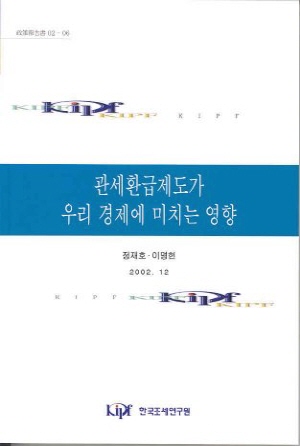한국조세재정연구원 - OAK리포지터리
Korea Institute of Public Finance
Open Access Repository
Korea Institute of Public Finance
Open Access Repository

관세환급제도가 우리 경제에 미치는 영향
Items in DSpace are protected by copyright, with all rights reserved, unless otherwise indicated.